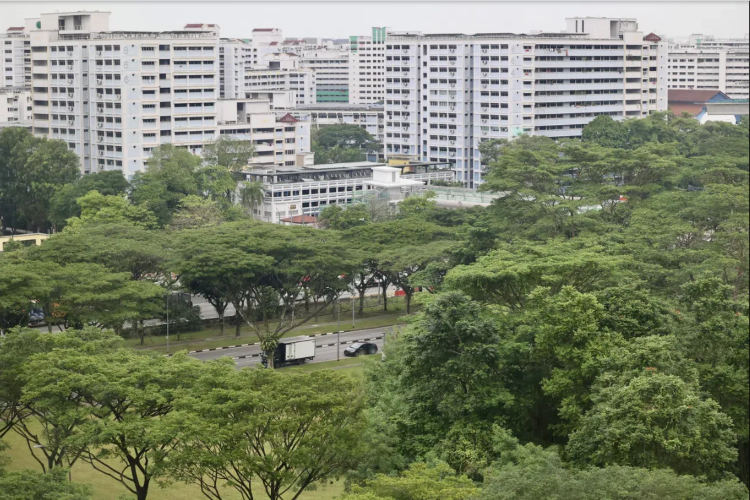Singapore and
Malaysia take lion’s share of the amount, notes study by Bain & Co and
Temasek.
[SINGAPORE]
South-east Asia managed to attract US$8 billion in green investments from the
private sector in 2024, up 43 per cent from the previous year, according to a
joint report by Bain & Company and Temasek released on Tuesday (May 6).
About 70 per
cent of these investments came from foreign investors. This was a stark
contrast from the previous year, when only 30 per cent were from foreign
sources.
Out of the six
South-east Asian markets studied in the report – which was also authored by
Google, Standard Chartered, as well as Temasek-backed decarbonisation
investment platform GenZero – it found that Malaysia and Singapore took the
lion’s share of the US$8 billion.
Green investment
into Malaysia increased by 124 per cent to US$2.3 billion, making up about 29
per cent of the total sum of investments. Green fund flows into Singapore
accounted for 33 per cent, as they jumped 194 per cent from the previous year
to US$2.7 billion.
The other four
markets – the Philippines, Thailand, Indonesia and Vietnam – saw a reduction in
green investments.
Indonesia
suffered the worst decline, dropping 22 per cent to US$1.2 billion. This was
followed by Vietnam, which had a 19 per cent reduction to US$161 million.
Green
investments into the Philippines went down by 12 per cent to US$1.3 billion,
while Thailand experienced a drop of 10 per cent to US$355 million.
When analysing
the allocation of green investments across different project types, about
two-thirds went into clean power projects, particularly solar which saw capital
flows doubling from the previous year and accounted for 21 per cent of the
total green investments in 2024.
Investments into
industrial waste management, which made up 9 per cent of the total fund flows,
also increased, primarily driven by water treatment and recycling projects.
In contrast,
electric vehicles (EVs) and agricultural productivity experienced a decline in
investments.
Despite the jump
in green investments, the report noted that there is still a funding gap of
about US$50 billion for these six Asean markets to meet their stated climate
pledges by 2030.
To make good on
these promises by 2030, South-east Asia has to reduce its emissions by another
600 million tonnes of carbon dioxide equivalent (tCO2e).
Solutions to
accelerate the green transition
To accelerate
the clean energy transition, the report advocates for a systems-based approach
that involves identifying systemic barriers, finding high-impact solutions and
prioritising those with the highest ability to drive lasting change.
This is because
the region’s green economy is a set of linked systems, where changes in one
area can affect others.
The report
identified three systems-level solutions that are important for South-east Asia
to decarbonise: a sustainable bio-economy, an EV ecosystem, as well as growing
its renewable energy along with developing the Asean Power Grid.
A sustainable
bio-economy would involve leveraging South-east Asia’s natural capital for
economic benefit and carbon reduction through sustainable agriculture,
expanding nature-based solutions, and scaling bio-waste utilisation.
EV adoption
could be accelerated by implementing buyer incentives, developing the necessary
infrastructure as well as its regional supply chains.
Investing in
grid infrastructure can help eliminate a critical bottleneck in scaling up renewable
power generation, with long-term positive impacts on regional energy security
and affordability.
The report
estimates that such an approach could help these Asean economies grow by US$120
billion by 2030, potentially bring about 900,000 green economy jobs, and close
the emissions gap of 600 million tCO2e by half to 300 million tCO2e.
It also noted
that these three systems-based solutions may also attract up to US$55 billion
in annual investments by 2030, which could potentially serve to shore up foreign
direct investments during an economic slowdown.
Climate and
transition finance, carbon markets, as well as green artificial intelligence
(AI) have also been identified in the report as key enabling solutions.
Growing the sum
of sustainable and transition financing requires expanding access to capital
through innovative financing models, regional financing frameworks and enhanced
risk-sharing mechanisms.
To grow the
region’s carbon markets, the report said there was a need to establish domestic
and regionally connected carbon markets, put in place stronger carbon policies
to drive demand, as well as increase the supply of large-scale verifiable
credit projects.
As for green AI,
it involves advancing AI-driven sustainability solutions while ensuring viable
data-centre growth.
Source: The
Business Times (Published 6/5/2025)
Link: Private
green investments in South-east Asia rise 43% to US$8 billion in 2024: report -
The Business Times
June 26, 2025













